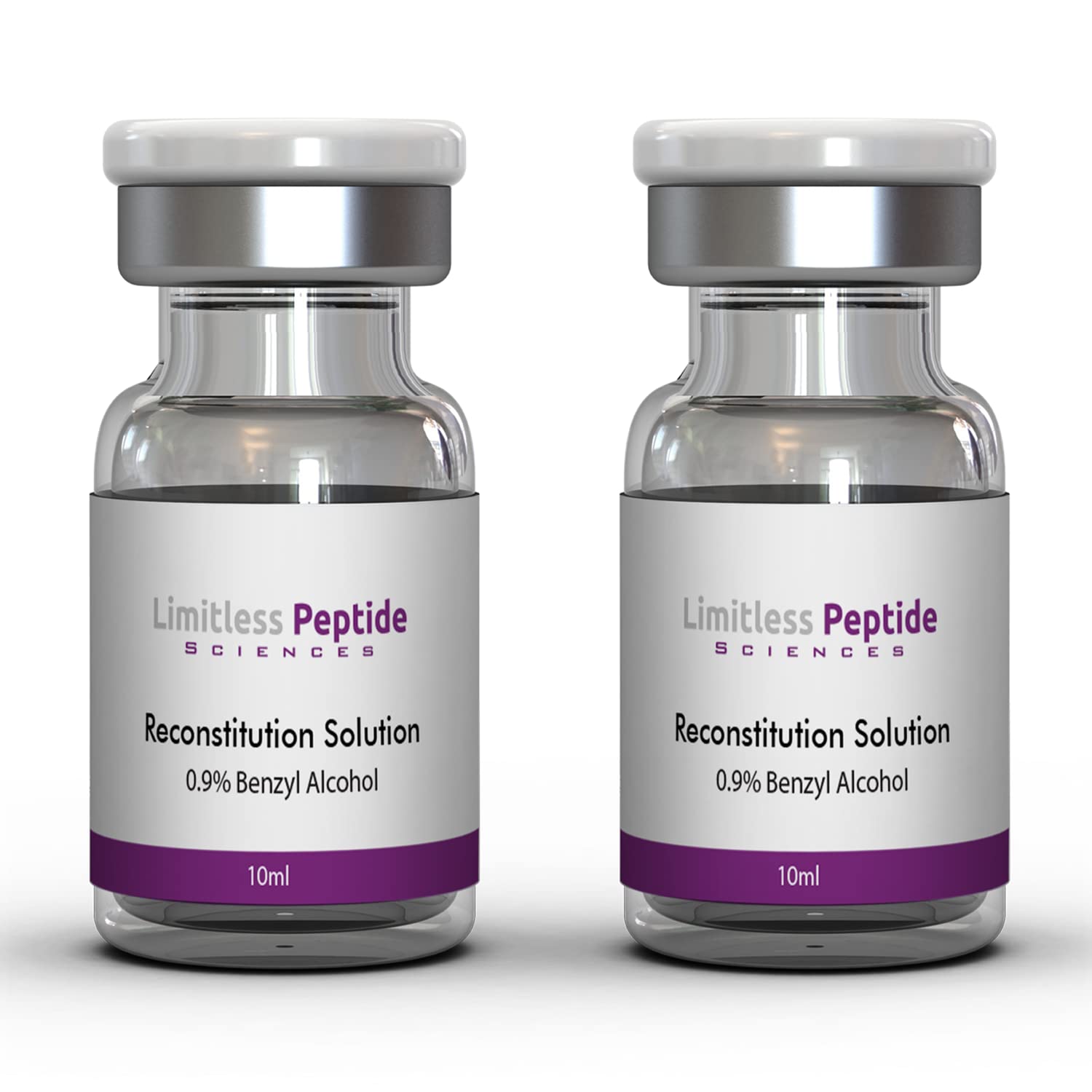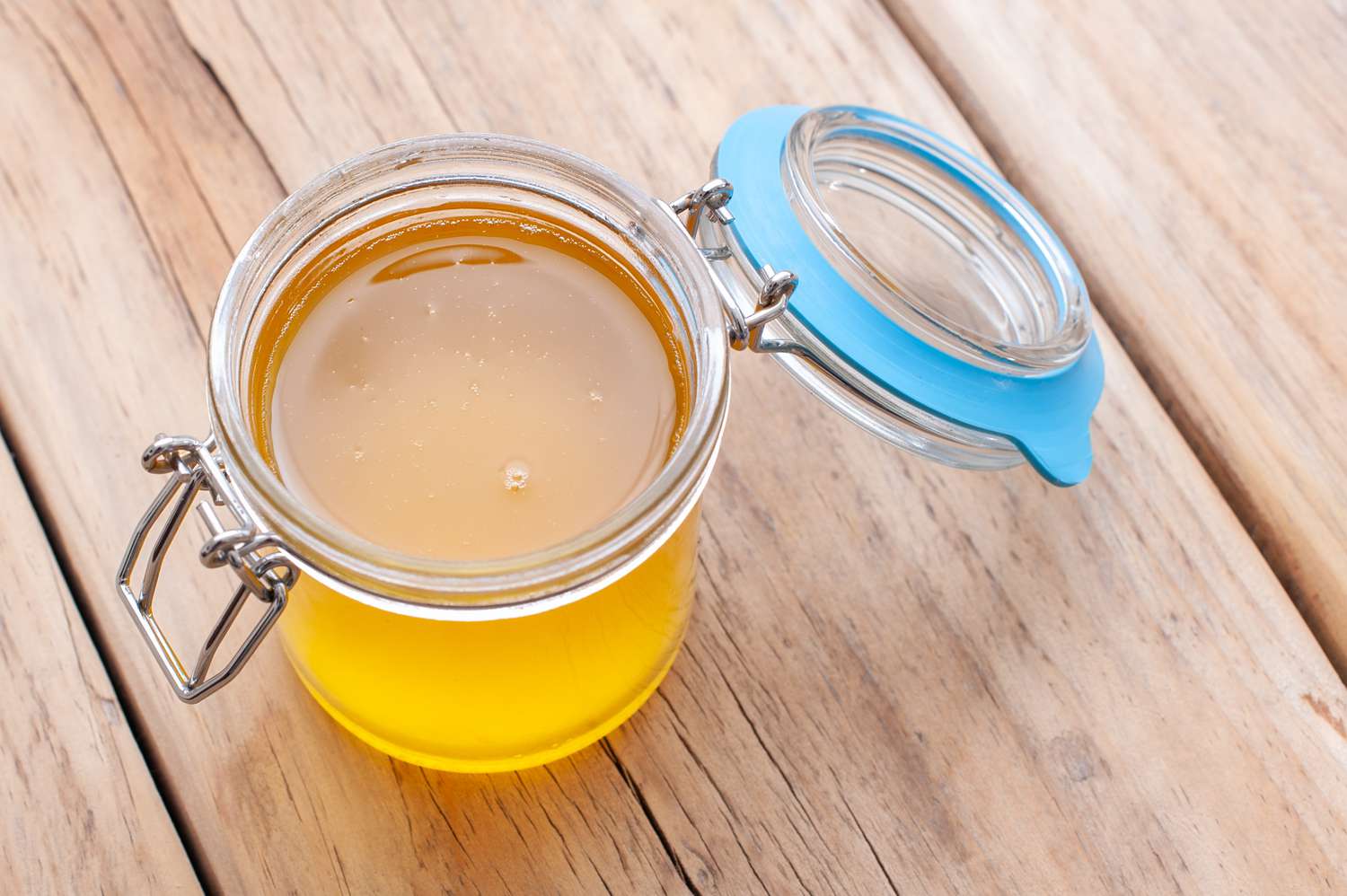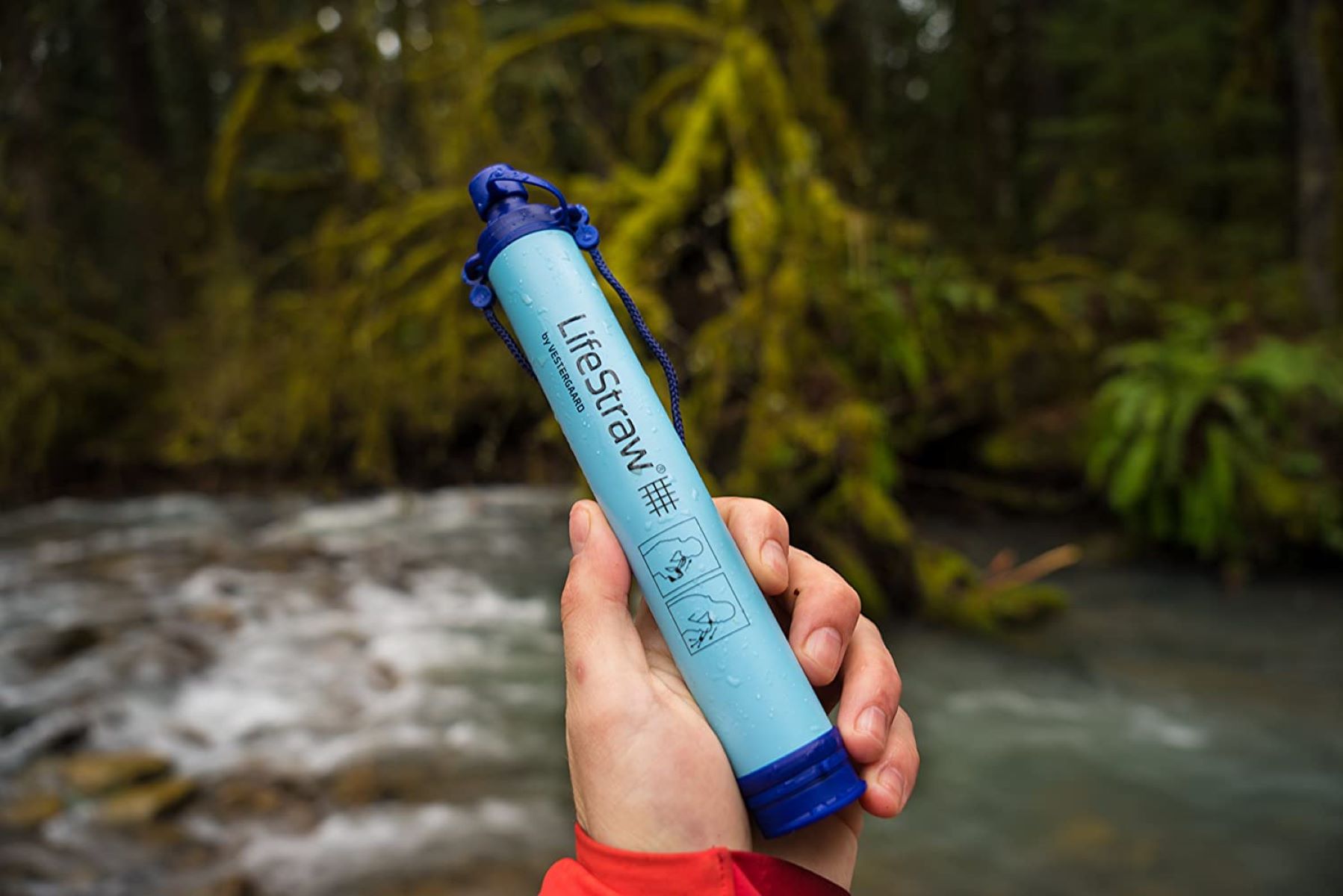

Articles
How To Store Reconstituted Peptides
Modified: August 27, 2024
Learn how to properly store reconstituted peptides to maintain their potency and effectiveness. Read our articles on peptide storage techniques and guidelines.
(Many of the links in this article redirect to a specific reviewed product. Your purchase of these products through affiliate links helps to generate commission for Storables.com, at no extra cost. Learn more)
Introduction
Welcome to this comprehensive guide on how to store reconstituted peptides. If you are involved in the field of peptides, whether for research purposes or medical applications, you understand the importance of proper storage to maintain their stability and efficacy. Peptides are delicate molecules that can undergo degradation if not stored correctly, leading to a loss of potency and potentially rendering them ineffective. Therefore, it is crucial to follow specific guidelines and best practices to ensure the longevity and quality of reconstituted peptides.
In this article, we will explore the general guidelines for storing reconstituted peptides, including recommended storage temperatures, container selection and preparation, protection from light, labeling and record-keeping, as well as handling and usage tips. By adhering to these practices, you can maximize the shelf life of your reconstituted peptides and maintain their integrity, allowing for accurate and reliable results in your experiments or treatments.
It is essential to emphasize that the information provided in this article is for educational purposes only and should not be considered as medical or professional advice. Always consult the manufacturer’s instructions and guidelines specific to the peptides you are working with and seek advice from a qualified professional if you have any concerns or questions.
Now, let’s dive into the details of proper storage for reconstituted peptides and discover the steps you can take to preserve their quality and efficacy.
Key Takeaways:
- Proper storage and handling of reconstituted peptides is crucial for maintaining their stability, integrity, and efficacy. By following guidelines on temperature, container selection, light protection, and record-keeping, you can optimize peptide storage and minimize degradation risks.
- Adhering to best practices for peptide storage and usage helps maximize their potential and achieve reliable results in research or medical applications. By implementing proper labeling, handling, and disposal, you can ensure the stability and efficacy of reconstituted peptides.
Read more: How To Store Store-Bought Bread
Importance of Proper Storage
Proper storage of reconstituted peptides is essential to maintain their stability, potency, and overall effectiveness. Peptides are sensitive molecules that can degrade easily under specific conditions, such as exposure to temperature extremes, light, air, or contaminants. Failure to store peptides correctly can result in reduced activity, decreased potency, and even complete loss of efficacy. Therefore, understanding the importance of proper storage is crucial for researchers, scientists, and medical professionals working with peptides.
One of the primary reasons for proper storage is to preserve the structural integrity of peptides. Peptides are composed of chains of amino acids that are held together by delicate bonds. Any external factors that disrupt or break these bonds can lead to peptide degradation and loss of activity. By following proper storage protocols, such as maintaining the recommended temperature and protecting against external elements, you can prevent changes in the peptide’s structure and ensure its functionality.
Another significant reason is to avoid contamination. Peptides are susceptible to bacterial or fungal growth, which can occur if they are not stored in a sterile environment or if proper aseptic techniques are not followed during handling. Contamination can impact the quality and safety of the peptide product. By storing peptides in a clean and controlled environment, such as a dedicated peptide freezer or storage cabinet, you can minimize the risk of contamination and ensure the purity of your peptides.
Moreover, proper storage helps to extend the shelf life of reconstituted peptides. Peptides can degrade over time due to natural processes or exposure to unfavorable conditions. Factors such as temperature fluctuations, moisture, or light can accelerate the degradation process, leading to a decrease in peptide potency. By implementing appropriate storage practices, you can slow down the degradation rate and prolong the shelf life of your peptides, saving resources and ensuring reliable experimental results or treatment outcomes.
Additionally, storing peptides properly allows for accurate dosing and consistent results. Peptides are often used in precise concentrations, and any degradation or variation in potency can affect the dosage accuracy. By storing reconstituted peptides under the recommended conditions, you can ensure that the concentration and activity of the peptide remain consistent, minimizing any discrepancies in dosing and maximizing the reliability and reproducibility of your experiments or treatments.
To summarize, proper storage of reconstituted peptides is vital to maintain their structural integrity, prevent contamination, extend shelf life, and ensure accurate dosing. By respecting the specific storage guidelines and implementing best practices, you can safeguard the quality and efficacy of your peptides, allowing for optimal results and outcomes in your research or medical applications.
General Guidelines for Storing Reconstituted Peptides
Storing reconstituted peptides correctly is essential to maintain their stability and effectiveness. While specific guidelines may vary depending on the manufacturer’s instructions and the nature of the peptide, there are general guidelines that can be followed to ensure proper storage. Here are some key considerations:
1. Temperature: Peptides should typically be stored at low temperatures to slow down degradation and maintain their activity. The recommended storage temperature commonly ranges from -20°C to -80°C. It is important to use a dedicated peptide freezer or storage unit to avoid temperature fluctuations and ensure a consistently cold environment.
2. Aliquoting: To minimize unnecessary thawing and refreezing, it is advisable to aliquot reconstituted peptides into smaller volumes that will be used for individual experiments or treatments. This reduces the risk of degradation due to repeated freeze-thaw cycles and allows for better control over the storage and usage of the peptide.
3. Storage containers: Choosing appropriate storage containers is crucial for maintaining the integrity of the peptide. It is recommended to use sterile, leak-proof, and non-reactive containers, such as cryogenic vials or glass vials with secure caps. Avoid plastic containers that may interact with the peptide or compromise its stability.
4. Buffer selection: The choice of buffer used to reconstitute the peptide can impact its stability and shelf life. Select a buffer that is compatible with the peptide and provides optimal conditions for its storage. Commonly used buffers include phosphate-buffered saline (PBS) and sterile water for injection (SWFI).
5. Protection from air and moisture: Peptides are sensitive to air and moisture, which can lead to oxidation and hydrolysis. Take precautions to minimize air exposure during storage by ensuring containers are tightly sealed and protected from humidity. Consider using desiccants or moisture-absorbing packets in the storage containers to further reduce moisture levels.
6. Labeling: Properly label the storage containers with essential information, including the name of the peptide, concentration, date of reconstitution, and any other relevant details. This facilitates accurate record-keeping and ensures easy identification of the peptide when needed.
7. Record-keeping: Maintain a detailed record of each reconstituted peptide, including the date of reconstitution, concentration, storage temperature, and any observations or notes. Regularly review and update these records to track the usage and stability of the peptides over time.
8. Storage duration: It is important to note the recommended storage duration for each peptide. While some peptides can be stored for extended periods, others may have limited stability, requiring shorter storage times. Follow the manufacturer’s guidelines and ensure that you use the peptide within the recommended time frame.
9. Regular monitoring: Periodically check the storage conditions of the peptide to ensure that the temperature is maintained, there are no signs of contamination or degradation, and the containers remain properly sealed. This helps to identify any potential issues early on and allows for timely corrective measures.
By following these general guidelines, you can optimize the storage conditions of reconstituted peptides and ensure their stability and efficacy. However, it is crucial to always refer to the specific instructions provided by the peptide manufacturer for detailed storage recommendations.
Recommended Storage Temperatures
Appropriate storage temperature is crucial for maintaining the stability and efficacy of reconstituted peptides. Generally, peptides should be stored at low temperatures to minimize degradation and preserve their activity. The recommended storage temperatures may vary depending on the specific peptide and manufacturer’s guidelines. Here are some common temperature ranges for storing reconstituted peptides:
-20°C: Many peptides can be stored at -20°C, which is the temperature of a standard laboratory freezer. This temperature is suitable for short-term storage of peptides and offers a convenient option for daily usage. However, it is important to note that long-term storage at this temperature may result in a gradual decrease in peptide stability and activity.
-80°C: For long-term storage and maximum stability, storing peptides at -80°C is highly recommended. Ultra-low temperature freezers, also known as deep freezers, are designed to maintain this temperature range. Storing peptides at -80°C significantly slows down degradation processes and helps to preserve their potency for an extended period.
Freeze-drying (Lyophilization): Some peptides may be freeze-dried for long-term storage. Freeze-dried peptides are usually stored at room temperature or even refrigerated conditions (around 4°C) in a desiccated form. Lyophilized peptides can be reconstituted with a suitable solvent before use. This method allows for long-term storage of peptides without the need for ultra-low temperature freezers.
It is important to note that while lower temperatures generally provide better stability, excessively low temperatures such as those below -80°C may not be suitable for all peptides. Some peptides, particularly ones containing delicate modifications or susceptible to freezing-induced damage, may require alternate storage conditions. Therefore, it is crucial to refer to the specific instructions provided by the peptide manufacturer to determine the ideal storage temperature for each peptide.
When storing peptides at low temperatures, it is essential to maintain a consistent and controlled environment. This involves using dedicated freezers or storage units that are designed for peptide storage and ensuring that the temperature remains stable. It is advisable to monitor the temperature regularly using a reliable thermometer or temperature monitoring system.
It is worth mentioning that regular temperature fluctuations, such as those caused by frequent door openings or power outages, can impact peptide stability. Take precautions to minimize temperature fluctuations and consider implementing backup power sources or alarms to safeguard the integrity of the stored peptides.
By storing reconstituted peptides at the recommended temperatures, you can prolong their shelf life, maintain their potency, and ensure consistent results in your research or medical applications. Always follow the specific guidelines provided by the manufacturer to determine the ideal storage temperature for each peptide and adjust your storage conditions accordingly.
Container Selection and Preparation
The selection of appropriate storage containers and their proper preparation is crucial for maintaining the quality and integrity of reconstituted peptides. The container should provide a sterile and suitable environment that prevents contamination, minimizes interactions with the peptide, and ensures its stability. Here are some key considerations for container selection and preparation:
1. Material: Choose containers made from materials that are compatible with peptides and do not react with or leach into the peptide solution. Commonly used materials include glass vials and cryogenic vials made of inert materials like borosilicate glass or medical-grade plastics. Avoid containers made of reactive materials, such as certain types of plastic, that may degrade or interact with the peptide.
2. Sterility: Ensure that the containers are sterile to prevent contamination. Sterility is particularly important when working with peptides that are intended for medical applications or sensitive experiments. Use autoclaved or pre-sterilized containers, or sterilize them using appropriate methods, such as autoclaving or chemical sterilization, before use.
3. Size: Consider the volume of reconstituted peptide solution that you typically use for experiments or treatments. Choose containers of an appropriate size that allow for easy aliquoting and minimize the need for repeated freeze-thaw cycles. Smaller volumes reduce the risk of degradation and improve the accuracy and efficiency of peptide usage.
4. Sealability: Ensure that the containers have secure caps or closures that provide an airtight and leak-proof seal. This helps to prevent air and moisture from entering the container, which can lead to oxidation or hydrolysis of peptides. Screw caps or snap-on lids are commonly used for this purpose.
5. Pre-use preparation: Before using the containers, ensure they are clean and free from any residues or contaminants that could affect the peptide’s stability. Wash the containers thoroughly with suitable cleaning agents and rinse them with distilled or deionized water. Dry them completely before use to eliminate any traces of moisture.
6. Proper labeling: Accurately label each container with essential information, including the name of the peptide, concentration, date of reconstitution, and any other relevant details. This ensures easy identification of the peptide and facilitates proper record-keeping and traceability.
7. Storage conditions: Once the peptides are aliquoted into the containers, transfer them to the appropriate storage environment, such as a dedicated peptide freezer or an ultra-low temperature freezer. Ensure that the containers are stored in an organized manner, with proper inventory management, to facilitate easy retrieval and minimize handling.
8. Handling precautions: When handling the containers, follow good aseptic techniques to prevent contamination. Wear appropriate gloves, use sterile tools or pipettes, and work in a clean and controlled environment to minimize the risk of introducing contaminants into the peptide solution or onto the container surfaces.
By carefully selecting suitable containers and preparing them appropriately, you can minimize the risk of contamination and ensure the stability and integrity of reconstituted peptides. Always follow the specific guidelines provided by the peptide manufacturer and consider consulting with experts in the field for additional insights on container selection and preparation.
Store reconstituted peptides in a dark, airtight container at -20°C to -80°C to prevent degradation. Avoid repeated freeze-thaw cycles to maintain stability.
Read more: How To Store Basil From Grocery Store
Protection from Light
Light exposure can significantly impact the stability and potency of reconstituted peptides. Peptides, especially those with sensitive bonds or modifications, can undergo photochemical reactions when exposed to light, leading to degradation and loss of activity. Therefore, it is crucial to protect reconstituted peptides from light to maintain their integrity. Here are some key measures to consider for light protection:
1. Light-resistant containers: Select storage containers that offer protection from light. Amber glass vials or opaque plastic vials are commonly used to shield peptides from direct light exposure. These containers block or reduce the amount of light that enters the peptide solution, providing an additional layer of protection.
2. Wrapping in aluminum foil: If using transparent or clear containers, consider wrapping them with aluminum foil to block light penetration. The foil acts as a barrier, preventing direct light from reaching the peptide solution. Ensure that the foil wrap is secure and covers the entire container surface.
3. Storage in dark areas: Store the peptide containers in areas that are away from direct light sources. Keep them in a pantry, cabinet, or dedicated storage space that is shielded from natural or artificial light. This helps to minimize exposure to light, reducing the risk of photochemical degradation.
4. Freezer organization: When using dedicated peptide freezers or ultra-low temperature freezers, consider organizing the containers to ensure that light exposure is minimized. Store the containers in a manner that prevents light from reaching them, such as placing them in the back of the freezer or using opaque storage boxes to shield them from light.
5. Avoid prolonged exposure during handling: Limit the exposure of reconstituted peptides to light during handling. Work in a dimly lit laboratory or shield the peptide solution by covering it with aluminum foil or placing it in an opaque container when not in use. This precaution helps to minimize the chance of light-induced degradation during normal laboratory procedures.
6. Quick transfer: If you need to move the peptide solution from the storage area to another location, do so quickly and avoid prolonged exposure to light. Keep the container covered and shielded during the transfer process to minimize light exposure.
7. Monitoring light-sensitive peptides: Some peptides are more sensitive to light than others. If you are working with peptides known to be light-sensitive, it is vital to take extra precautions. Refer to the manufacturer’s guidelines or consult with experts to determine the specific light protection measures required for these peptides.
By implementing appropriate measures to protect reconstituted peptides from light, you can minimize the risk of degradation and maintain their integrity and activity. However, it is important to note that the level of light protection required may depend on the specific peptide and its sensitivity to light. Always refer to the manufacturer’s instructions and consult with experts in the field for specific recommendations regarding light protection for your peptides.
Labeling and Record Keeping
Proper labeling and record keeping are essential for maintaining accurate documentation and traceability of reconstituted peptides. Clear labeling ensures easy identification of peptides and provides valuable information about their concentration, reconstitution date, and storage conditions. Additionally, comprehensive record keeping allows for effective inventory management and monitoring of peptide stability. Here are key considerations for labeling and record keeping:
1. Container labeling: Each storage container should be clearly labeled with relevant information, including the name or code of the peptide, concentration, date of reconstitution, and any other necessary details. Use waterproof and smudge-resistant labels or specialized label printers to ensure durability.
2. Standardized format: Establish a standardized format for labeling to ensure consistency and ease of interpretation. Consistency in labeling helps to prevent confusion and allows for quick identification of the desired peptide when needed.
3. Color-coding: Consider using a color-coding system to categorize or differentiate different peptides or storage conditions. For example, you can assign specific colors to peptides that require specific handling or storage considerations, making it easier to identify and retrieve the desired peptide quickly.
4. Detailed record keeping: Maintain detailed records of each reconstituted peptide, including important information such as the source or supplier of the peptide, batch or lot numbers, date of reconstitution, concentrations, and storage conditions. Record any observations or notes related to peptides’ stability or usage. This information promotes traceability and aids in troubleshooting or quality control efforts.
5. Storage location tracking: Document the specific location of each peptide within the storage area. This can be simply recording shelf, rack or drawer numbers or utilizing a digital inventory management system. This helps in maintaining an organized storage system and facilitates easy retrieval of peptides when required.
6. Regular review and updates: Review and update the labels and records regularly to ensure accuracy and completeness. Cross-check the information against the actual containers to ensure consistency between the labeled information and the contents. Update the records promptly when any changes occur, such as aliquoting, concentration adjustments, or additional storage conditions.
7. Disaster recovery measures: Implement backup strategies or digital platforms to ensure the safety and accessibility of electronic records. Store physical copies of critical records in secure locations or utilize cloud-based storage solutions for digital records. This helps in protecting the data from potential damage or loss due to unforeseen events.
8. Retention of records: Follow regulatory or organizational guidelines for the retention of records. Depending on the purpose and requirements, it may be necessary to keep records for a specific period of time, even beyond the actual usage of the peptides. Adhere to the recommended retention period and dispose of records securely when no longer required.
By implementing proper labeling and record-keeping practices, you can ensure accurate documentation, effective inventory management, and traceability of reconstituted peptides. This promotes efficient storage and retrieval, aids in quality control efforts, and enhances overall laboratory or medical practice operations.
Handling and Usage Tips
Proper handling and usage of reconstituted peptides are crucial for maintaining their stability, integrity, and efficacy. Following best practices when working with peptides helps to minimize the risk of contamination, degradation, or mishandling. Here are some important tips to consider:
1. Good laboratory hygiene: Practice good laboratory hygiene by wearing appropriate personal protective equipment (PPE), such as gloves and lab coats, while handling peptides. Wash hands thoroughly before and after handling peptides to prevent contamination from external sources.
2. Aseptic technique: Employ aseptic techniques when preparing, aliquoting, or transferring peptide solutions. Use sterile tools, such as disposable syringes or pipettes, in a clean and controlled environment. Avoid touching the inside of the container or any part of the tools with your bare hands to minimize the risk of contamination.
3. Avoid freeze-thaw cycles: Minimize the number of freeze-thaw cycles by aliquoting peptides into smaller volumes based on usage requirements. Excessive freeze-thaw cycles can lead to degradation of peptides, resulting in decreased stability and potency.
4. Thawing process: When thawing frozen peptides, avoid abrupt changes in temperature. Gradual thawing in a controlled environment, such as a refrigerator at 4°C, is recommended. Never heat frozen peptides to accelerate the thawing process as this can compromise their stability.
5. Gentle mixing: When handling reconstituted peptides, gently mix or swirl the solution to ensure proper distribution and homogeneity. Avoid vigorous shaking or vortexing, which can introduce air bubbles and potentially cause damage to the peptide structure.
6. Protection from temperature and light: During handling, protect peptides from exposure to extreme temperatures and direct light. Keep the peptide solution in a cool and dark environment, preferably on ice or in a refrigerated cabinet, if necessary, to maintain stability throughout the handling process.
7. Dilutions and preparations: Follow the manufacturer’s instructions or recommended protocols for diluting peptide solutions. Pay attention to the required solvent or buffer, as well as the appropriate concentrations. Use accurate measuring techniques to ensure that the desired concentrations are achieved for optimal results.
8. Storage between usage: If you need to store reconstituted peptides between usage, adhere to the recommended storage conditions. Keep the solution in a temperature-controlled environment, protect it from light, and ensure proper sealing of the container to maintain the stability and efficacy of the peptide.
9. Usage expiration: Be aware of the expiration date or recommended usage duration for the reconstituted peptide, as specified by the manufacturer. Use the peptide within the specified time frame to ensure optimal potency and reliability. Discard any unused portions after the expiration date.
10. Proper waste disposal: Dispose of unused or expired peptides and associated materials following proper waste disposal protocols. Consult with local regulations and guidelines to determine the appropriate method for peptide waste disposal, as some peptides may require special handling or disposal procedures.
Following these handling and usage tips helps to maintain the quality, stability, and efficacy of reconstituted peptides. Always refer to the specific instructions provided by the peptide manufacturer and seek guidance from experts in the field for additional insights on handling and usage practices.
Conclusion
Proper storage and handling of reconstituted peptides are crucial for maintaining their stability, integrity, and efficacy. By following the guidelines and best practices outlined in this article, you can optimize the storage conditions, minimize degradation risks, and ensure the long-term stability and potency of your peptides.
Starting with the importance of proper storage, we discussed how peptides are sensitive molecules that can degrade easily under specific conditions. We explored the significance of maintaining their structural integrity, avoiding contamination, extending shelf life, and ensuring accurate dosing and consistent results. By understanding the importance of proper storage, you can make informed decisions to preserve the quality and efficacy of your peptides.
We then delved into general guidelines for storing reconstituted peptides, which included recommendations on storage temperatures, container selection, protection from light, labeling and record keeping, and handling and usage tips. These guidelines serve as a foundation for creating an optimal storage environment for your peptides, minimizing the risk of degradation and ensuring their stability and functionality.
Lastly, we emphasized the significance of proper labeling and record keeping, which helps in maintaining accurate documentation, effective inventory management, and traceability of reconstituted peptides. We also provided essential handling and usage tips to avoid contamination, degradation, and mishandling during peptide work. By adhering to these best practices, you can maximize the potential of your peptides and achieve reliable and consistent results in your research or medical applications.
It is important to note that while this article provides general guidelines, specific instructions provided by the peptide manufacturer should always be followed. Additionally, consulting with experts in the field can provide further insights and guidance tailored to your specific peptide needs.
In conclusion, by implementing proper storage, handling, and usage practices, you can ensure the stability, integrity, and efficacy of your reconstituted peptides. With careful attention to detail and a commitment to following the best practices outlined in this article, you can enhance the quality of your peptide work and contribute to successful research outcomes or effective medical applications.
Frequently Asked Questions about How To Store Reconstituted Peptides
Was this page helpful?
At Storables.com, we guarantee accurate and reliable information. Our content, validated by Expert Board Contributors, is crafted following stringent Editorial Policies. We're committed to providing you with well-researched, expert-backed insights for all your informational needs.















0 thoughts on “How To Store Reconstituted Peptides”